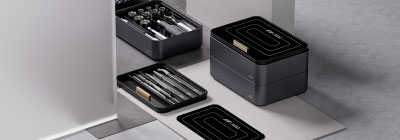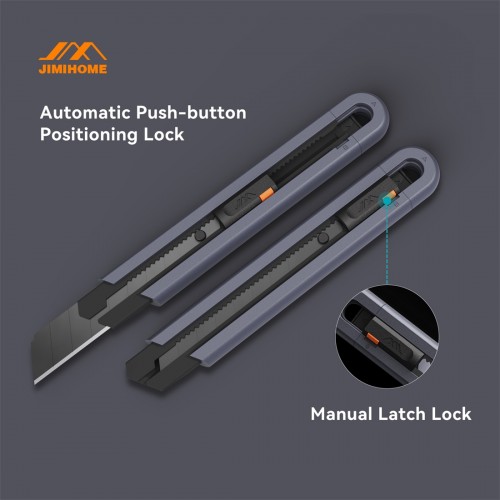
Mastering Utility Knife Safety: A Comprehensive Guide for DIYers and Professionals
Introduction
Among all hand tools, the utility knife is deceptively simple yet extremely powerful. Whether slicing cardboard, trimming drywall, or opening packages, a sharp utility knife is essential. However, improper use can result in serious injuries. Utility knives are involved in a significant portion of workshop accidents each year. This guide provides practical advice to help beginners and professionals use utility knives safely, maintain blades, and store them properly.
Why Safety Matters
Utility knives are versatile but inherently risky. Many accidents occur due to:
-
Cutting toward the body instead of away from it.
-
Using a dull blade, which requires excessive force and increases the chance of slipping.
-
Attempting to cut materials too thick or tough for the knife.
-
Storing knives with blades extended.
-
Ignoring personal protective equipment (PPE).
-
Failing to inspect the knife before use.
Even minor lapses can result in cuts, punctures, or more severe injuries. For example, storing a knife improperly in a tool bag has caused accidental cuts when someone reached inside without checking.
Proper Knife Usage
To minimize risk and maximize efficiency, follow these best practices:
-
Use the Knife Only for Cutting – Never use it as a pry tool, screwdriver, or for unintended purposes.
-
Cut Away from Your Body – Position the blade so that it moves away from hands and torso.
-
Apply Gentle, Controlled Pressure – Let a sharp blade do the work; pushing too hard can cause slips.
-
Inspect Before Use – Ensure the handle, blade, and locking mechanism are intact and functioning.
-
Keep Blades Sharp – A sharp knife requires less effort and reduces the risk of slipping.
-
Do Not Throw the Knife – Utility knives are not toys; throwing them is dangerous.
Personal Protective Equipment (PPE)
When cutting near the body or in awkward positions, protective gear is recommended:
-
Cut-Resistant Gloves – Protect hands from accidental slips.
-
Kevlar Sleeves or Arm Guards – Ideal for tasks requiring close contact with the blade.
-
Safety Glasses – Shield eyes from flying debris during cutting.
Safe Storage Practices
Proper storage prevents accidents at home or on the job:
-
Always carry knives in a sheath or protective cover.
-
Do not leave knives exposed on tables or workbenches.
-
Store blades down or fully retracted in a dedicated pouch or toolbox.
-
For retractable knives, ensure the blade is completely retracted when not in use.
First Aid Tips
Even small cuts can become serious if untreated. Always:
-
Clean and disinfect wounds immediately.
-
Cover cuts with appropriate bandages to prevent infection.
-
Seek medical attention for deep cuts or signs of infection.
Choosing the Right Knife
Selecting the right utility knife is key to efficiency and safety:
-
A high-quality, sharp knife should cut smoothly without excessive effort.
-
Avoid knives that are too small, weak, or unsuitable for the material.
-
Replace blades regularly to maintain optimal cutting performance.
Advanced Tips for Professionals
-
Use a designated cutting surface to protect work areas and extend blade life.
-
Test locking mechanisms before starting any cutting task.
-
Consider specialized knives for specific materials such as drywall, cardboard, or plastic.
-
In shared workspaces, label or color-code knives to prevent misuse.
Utility knives are essential tools for DIYers and professionals but must be handled with care. Following proper usage, protective measures, storage, and first aid practices greatly reduces injury risk. JIMIHOME provides high-quality utility knives with SK2 blades and innovative safety locks, suitable for beginners and experienced users. Every knife ensures precise, safe, and efficient cutting, and all orders include free shipping. Use the right tools, work safely, and complete every task with confidence.




-500x500.jpg)

Leave a Comment